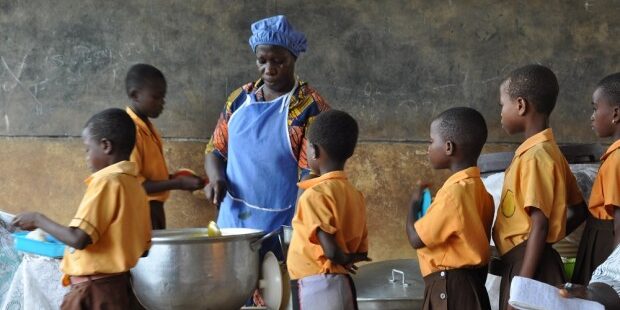Overview of the Ghana School Feeding Program (GSFP)
The Ghana School Feeding Program (GSFP) is a national initiative aimed at providing free meals to children in public primary schools across Ghana. Launched in 2005 as a pilot project, the program seeks to enhance food security, alleviate poverty, and increase school enrollment and retention rates among young learners.
Objectives of the Program
Immediate Objectives
- Increase School Enrollment and Attendance: The program aims to boost the number of children attending school by providing meals that encourage attendance.
- Reduce Hunger and Malnutrition: By offering nutritious meals, the GSFP addresses immediate hunger and nutritional deficiencies among school-aged children.
- Boost Domestic Food Production: The program emphasizes the use of locally sourced ingredients, thereby supporting local farmers and enhancing domestic food production.
Long-Term Objectives
- Poverty Reduction: Through improved nutrition and education, the program aims to contribute to broader poverty alleviation efforts.
- Improving Food Security: The GSFP plays a role in enhancing food security by ensuring that children receive at least one nutritious meal each school day.
Implementation Mechanism
- The program provides a hot meal to children every school day
- The meals are prepared using locally grown ingredients
- The program aims to spend 80% of its budget in the local economy
The target group of the programme
All public primary schools and kindergartens in Ghana Local farmers
Stakeholders Involved
The implementation of the GSFP is overseen by the Ministry of Gender, Children and Social Protection (MoGCSP). It collaborates with various international organizations such as:
- World Bank
- UNICEF
- World Food Programme
Additionally, national organizations like the US Agency for International Development (USAID) and the Canadian International Development Agency (CIDA) play significant roles in supporting the program’s objectives.
Achievements
The GSFP has made significant strides since its inception, including:
- Feeding approximately 1.69 million children, which accounts for 37.4% of national coverage.
- Presenting a National School Feeding Policy to MoGCSP for Cabinet approval.
- Implementing electronic payments for caterers to streamline operations.
- Developing new guidelines for caterer contracting and procurement.
- Creating a ration design tool for caterers to ensure proper meal planning and delivery.




